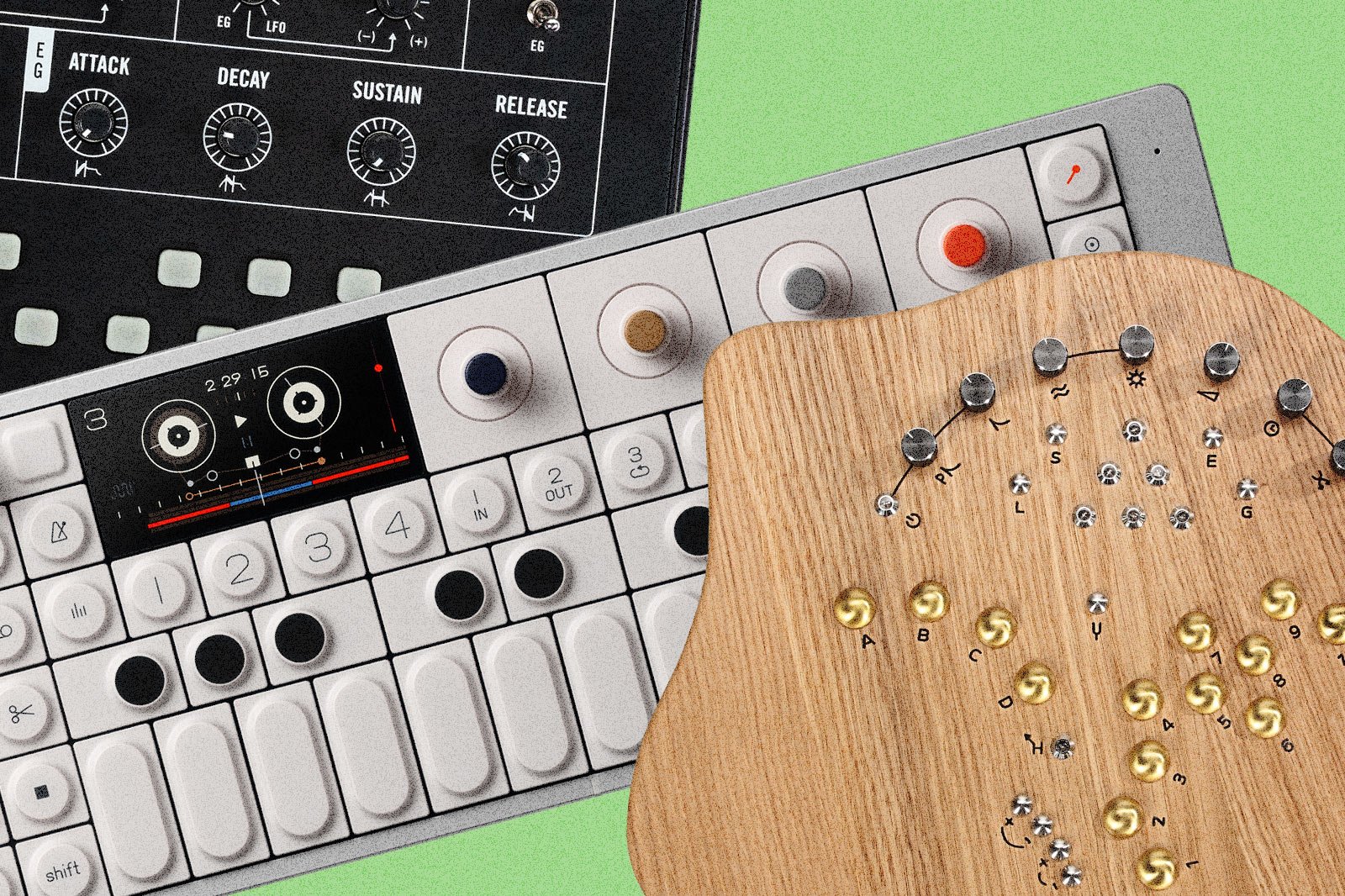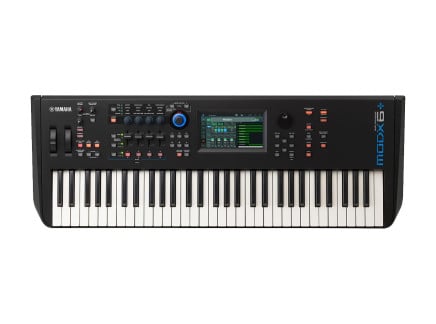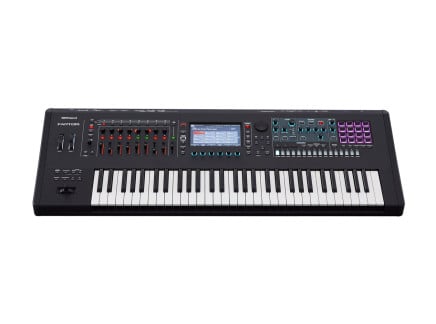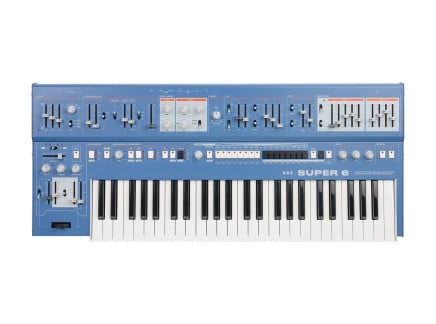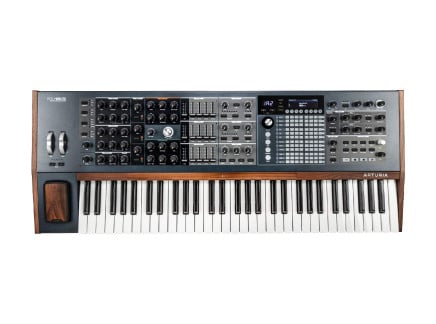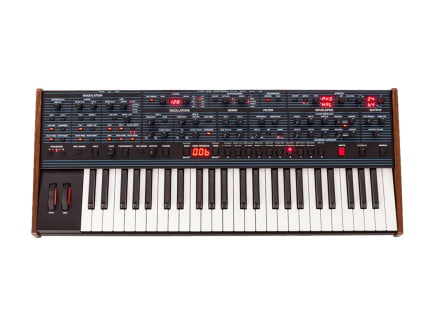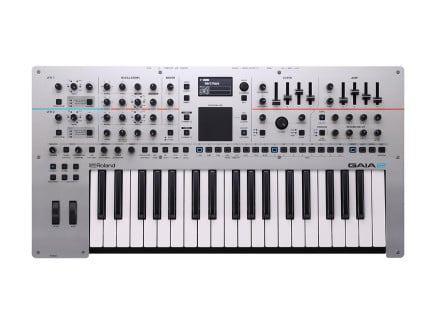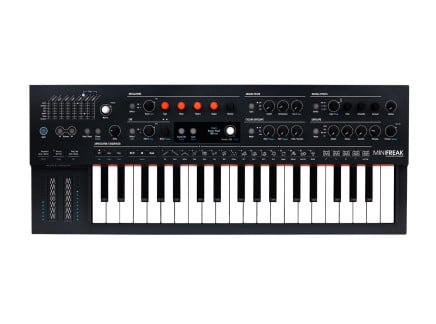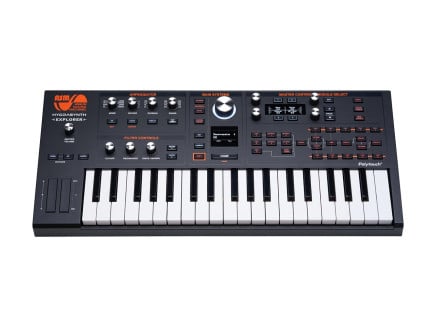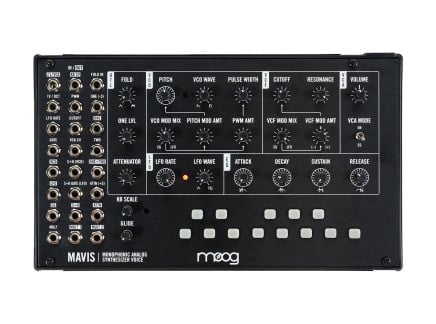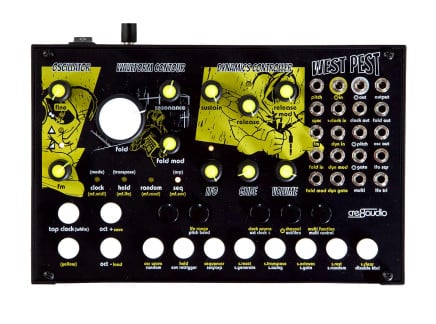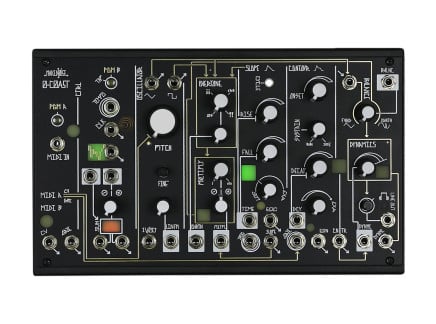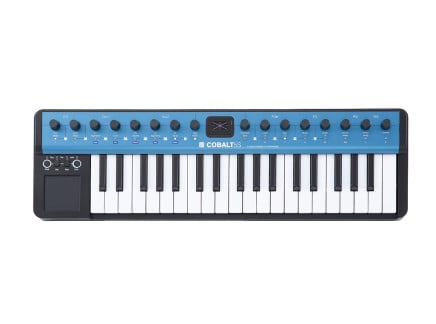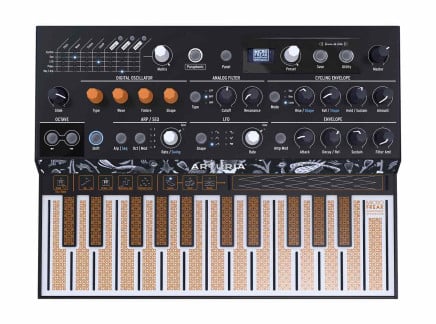So...should you buy a hardware synthesizer? The short story: if your mind is chewing over the idea that a hardware synthesizer might be a nice thing to have around, you should probably pull your wallet out and slap down some cash on one. There's no way of knowing whether adapting your workflow to accommodate hardware will be a fabulous idea unless you give it a go. You can't emulate it, synthesize it, or simulate it; you have to hold it in your hands.
However, there are some things you should consider before taking the plunge. We should talk about those—about how you integrate a synthesizer into your way of being creative. We should explore the pros and cons of balancing hardware complexity against software simplicity, hardware fleshiness against software etheriality, and hardware limitations against the limitlessness of the computer. So, let's spend some time considering what could be gained and what could be lost in the trend towards hardware.
I've Been There
Why should you listen to me? Because I was exactly where you are now about five years ago. I burst out of the box and dribbled myself all over as much hardware as I could find. I absorbed synths, picked up a deeply entrenched modular synth habit, and even bought a second-hand freakin' reel-to-reel tape recorder.
Before then, I had been in the box since 1996, when I first wired my 4-track into Digital Orchestrator Plus on my 486 PC. For the next 20 years, I built and sold computers for audio production, reviewed software and audio interfaces for magazines, and literally wrote the book on computer music (PC Music - The Easy Guide, PC Publishing 2000). Today, I still write monthly workshops on PreSonus Studio One for Sound On Sound magazine. So I know what it's like to work in the box. I see the sense of wonderment, the incredible vastness of possibility, the power of these software tools. I also know the frustration of broken plugins, the futility of presets and the pain of countless unfinished projects peering at me from the dark recesses of my hard drives.
There can be many reasons to look at hardware, but in my experience it boils down to a sense of being bored. Hardware synths are undoubtedly cool and exciting in a way that software just...isn't. They can look so amazing that you could probably get a following on Instagram just by sharing daily picturse of them (in fact, many have). They are physical objects, desirable and inspirational, so why on earth am I sitting here trying to forge my creativity through the laser focus of a mouse?
That all said, I'm not here to convince you that you need a hardware synthesizer. This article is about juggling the pros and cons of both possibilities. Maybe considering a hardware synthesizer's impact on your workflow will reignite your enthusiasm for everything the software environment offers you.
Why are You In the Box in the First Place?
If you are old enough to remember music production before the advent of the DAW and virtual instruments, you might recall how much of a pain it all was. Everything took time and organization. Studio engineers didn't just fiddle with mixers; they had to be equipment managers, cabling gurus, and repairers of sensitive electronics. Hardware takes up an enormous amount of space; it's heavy, hot and needs cleaning and maintenance. Music was made in sessions where everything you needed was set up for that session—and if you didn't finish it or record it, it would probably be lost. MIDI is great, but it isn't very clever, so keeping track of patches or corresponding sample library was a nightmare. But it was what we had, and we loved it.
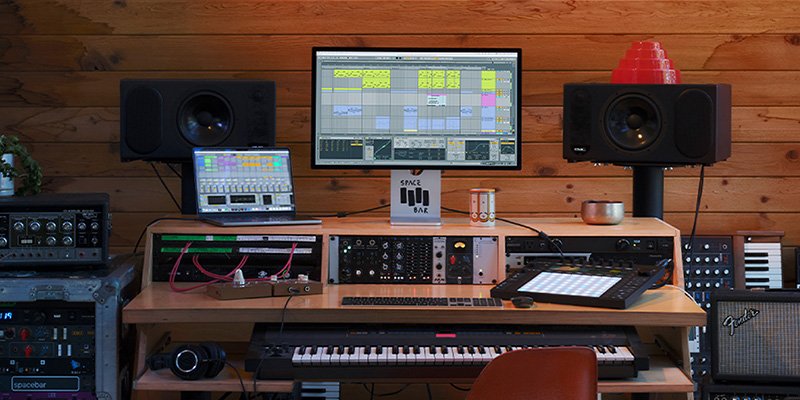
Then came the DAW—and it felt like almost overnight, everything changed. Of course, it took many years to pull everything into the box, but if you were to tell a music producer 25 years ago that you could load a single project file and within seconds, you'd have a dozen synth patches loaded, along with an orchestra of samples, every audio processor and effect recalled, the mixer automated to capture every nuance and dynamic of performance, and it would play back the same, days, weeks, months later? They would think you were mad. If you've only ever worked with software, then you've no idea how good, easy, convenient and downright lazy it all is. The concept of saving all the patches, all the instrument settings, plugins and multiple mixing choices into a project is extraordinary. Software is safe, saveable and recallable. And you want to bring the chaos of hardware into this utopia?
Software is not perfect though, and we've all experienced the time lost trying to get an iLok to authorize, or plugins to update, or our audio interface to perform its basic functions. Sometimes, you feel like tech support is all you do. And if the computer up and dies, then it's all gone. Remind yourself to back your projects up! The computer is also the hub of your digital life. You have to deal with the constant distraction of social media, email, and other things that you should probably get done. Your back aches from sitting in the same position; your eyes are sore from staring at the screen, and you are just so bored. So, maybe there is another way.
What's the Impact of Adding a Synth?
Let's discuss the reality of adding a hardware synthesizer to your software workflow. The first thing you'll need is space. No more balancing of a laptop on the sofa for you. You don't need to go out and buy stands or racks immediately, but you will need to start managing the space in which you create.
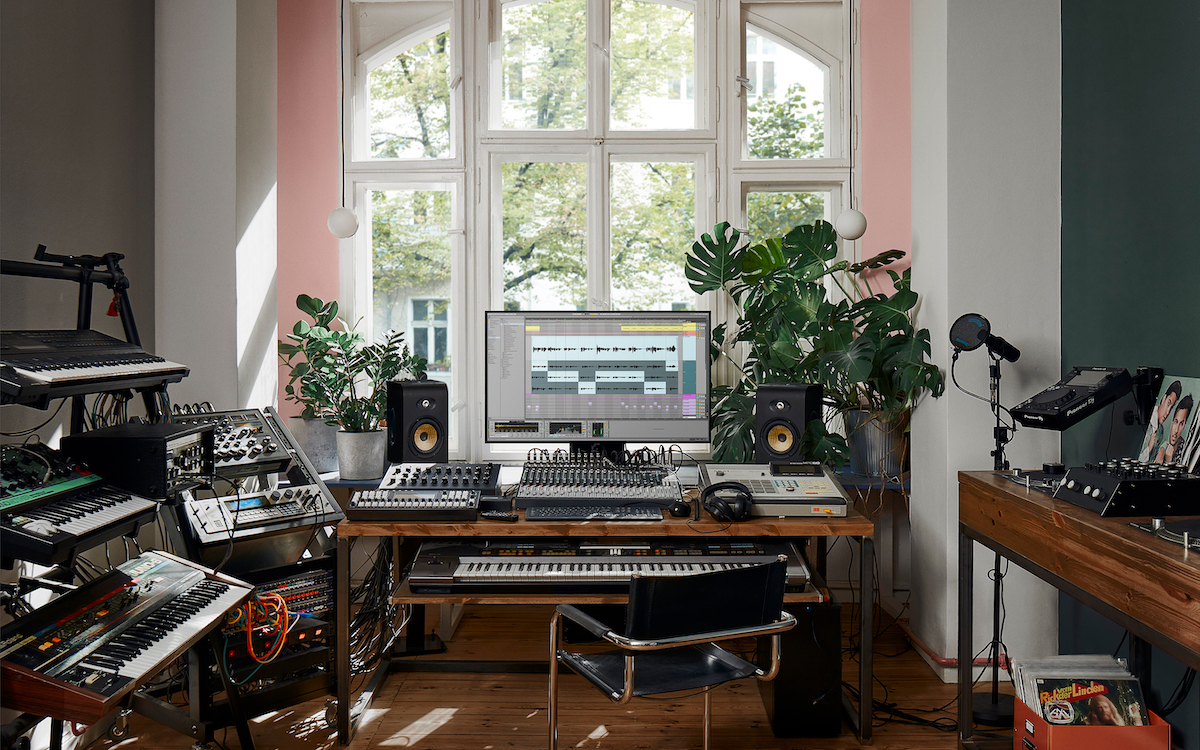
Think about how you are going to hear the synth. We're talking about a hybrid workflow of sound coming from your computer and your synth, and you're going to want to hear them together. The idea of a hardware mixer may have just popped into your head, which is a great example of how hardware tends to spread into more hardware. But you don't need to go there yet. Your audio interface should have a couple of inputs. You could use direct monitoring as the easiest solution, but if your latency is low enough then run your synthesizer directly through your DAW. Set up a couple of tracks, switch on monitoring, and you're ready for both recording and live effects processing.
You could treat the synth as an acoustic instrument, recording the output as you play. But it will likely have MIDI, so you could sequence it from your DAW, giving you far more flexibility. This brings with it a little selection of challenges. Not all MIDI-compatible synths have USB, and not all audio interfaces have regular MIDI ports, so you might need to buy a MIDI interface for the computer. Saving patches in a sequence for recall is not always possible; it depends on the synth. And you might have to get into things like SysEx dumps and MIDI message filtering. However, more often than not, MIDI will just work.
A lot will depend upon the synthesizer you are using. Many are entirely MIDI compatible, with presets and recallable patches, and MIDI control over every parameter. Many are not. Some synths don't have any ability to save presets; they are simply set to what the knobs point to on the front of the machine. In the old days, you'd sketch the layout of your synth or use photocopied patch sheets to record the settings. These days you can take a picture of the front panel with your phone.
Suppose your interest in hardware bends towards modular, Eurorack, and nostalgic analog synthesizers. In that case, you may have to abandon any connection to your computer and plunge into a DAWless approach...but that's a discussion for another time.
Adding hardware to your setup will change your whole environment. If you want more sounds on your computer, just install another plugin. If you want more sounds in hardware, you have to make space for it, worry about the cabling, how you'll hear it, control it and store the boxes.
But...Which Synthesizer?
If you are unperturbed by the logistical complexities, then the next question is, what synth should you get? I'm sure if hardware has taken up residence in your head, then you've already been poring over websites, YouTube videos, and even magazines (because you're old school), and have an idea of what you're looking for. But here's some advice to get your wheels turning.
Think about what you are trying to achieve. Now, I can't stand this advice; it drives me nuts whenever I hear it because it suggests that we're supposed to know what we're doing, like there's some kind of plan, and honestly, many of us have no idea. But that doesn't make it bad advice; we just have to think about it differently. Ask yourself if you are trying to replicate sounds that are already in your computer. Are you more interested in replicating in hardware what you do in software, or are you wanting to do something different? Are you into expanding your possibilities or getting more physical with your music? Is it simply curiosity or about looking cool? Is it more about the sounds or more about the performance aspects? If you get honest about these sorts of questions, they can help you drill down into what your expectations are and push you towards making a better decision. But there is absolutely no reason why you can't throw a bunch of cash at something that just looks awesome.
Let's step through a few choices.
Big Synth Workstations
These are the big brand flagship machines, like the Korg Nautilus, Roland Fantom and Yamaha MODX+. They are filled with multiple, simultaneous synth engines, sampling, sequencing, editing; they are the hardware equivalent of your DAW for people who want to compose in hardware through a little screen.
These instruments are a massive source of multi-timbral sounds, but often juggle so many tasks that they can't really have the specific hardware controls that people would normally imagine a synthesizer to have.
Professional Synthesizers
These are the large format keyboard synthesizers that are covered in knobs and offer the traditional synthesizer experience in both sound and control. These will be beautiful, expensive, worthwhile and possibly even life-changing instruments. Take a look at synths like the UDO Super 6, the Sequential Prophets, the Trigon-6, or the Novation Summit.
You can lose yourself in these synths. They will be polyphonic but probably only produce one sound at a time. So, while you can sequence the current patch, you will have to record it as audio to then use a different sound in your project.
Mid-Sized Synthesizers
This is a very interesting place to play. Under or around $1,000, there are some fantastic synth choices that are full of controllable sound and a perfect place to start a hardware adventure.
Consider a classic like the Korg microKORG or an analogue polysynth like the Minilogue; in fact Korg has a lot to offer here with the OpSix, Wavestate and Modwave. For something more modern, check out the ASM Hydrasynth Explorer or the Arturia MiniFreak. Roland has some cool JD synths in this category, and Yamaha has its Reface range. You've got hands-on controls, a wide range of sounds, and most of them are very DAW-friendly.
Semi-Modular Synthesizers
If you are intrigued by modular synthesis but are not quite ready to embrace the complexity of Eurorack, then there are plenty of excellent synthesizers that incorporate a bit of physical patching. This will help you rethink synthesis and start experimenting with sound and voltage in ways that software or large synths rarely let you do.
Check out the impressive Moog Matriarch and Grandmother, the delightful PWM Malevolent, and the fierce Korg MS-20. You'll discover strangeness in the Make Noise Strega, the Pittsburgh Taiga, and the Moog Subharmonicon. These will often be monophonic, and a whole load of fun. You can have a serious bass-synth party with just a Cre8Audio East Beast or Dreadbox Erebus.
Balancing Your Choices
This doesn't have to be a huge decision. It can be a completely casual and fun fumble with something a bit different. You're not cheating on your computer or risking your workflow; you are broadening your horizons and giving yourself options. A hardware synth might change everything you do...or, it might just end up gathering dust and getting in the way.
You may find that what you're actually after is a better hardware connection to your software. In this case, synth-focused MIDI controllers from Arturia or Native Instruments might be the answer. If you spend a bit of time mapping MIDI controls and creating software instrument templates, perhaps you'll use the mouse less and feel freer to play more creatively in the box.
Synthesizers can be disappointing, especially at the lower end, where they don't have effects to make everything sound huge. One of the truths of starting out with modular in particular is that you can spend a huge amount of money and end up with something that sounds like a broken signal generator (more thoughts on going modular here). Hardware synths take time to learn; they won't always have presets, and you can't just load up another one; you have to work with the panel in front of you. And don't forget, your DAW has effects; it loops and can record layers of audio that can make even the most unimpressive synth sound amazing. You don't have to buy into the purity of hardware; mix it up, abuse it, and use your software tools to maximize the potential of your hardware.
In my experience, hardware synths can be enormously releasing. While my DAW is often the destination for what I'm doing, I've never been as creative as I am now being outside the box. Taking sounds into my own hands has made my music more interesting; I've finished more projects, but perhaps most importantly, I've enjoyed playing with electronic sounds and instruments far more. I'm still amazed by what software can do, but I've found more joy in hardware.
Need a next step? Check out our dedicated guide discussing the Best Synthesizers for Beginners—great for absolute newcomers, or to those considering expanding their computer-based setup.

